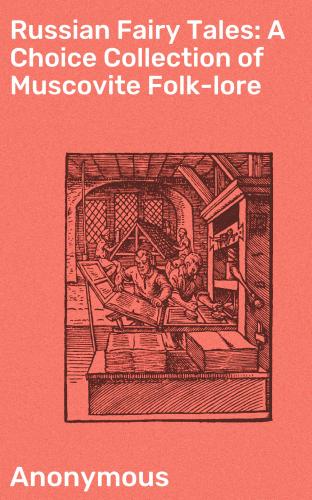Besides the stories about animals, I have left unnoticed two other groups of skazkas—those which relate to historical events, and those in which figure the heroes of the Russian “epic poems” or “metrical romances.” My next volume will be devoted to the Builinas, as those poems are called, and in it the skazkas which are connected with them will find their fitting place. In it, also, I hope to find space for the discussion of many questions which in the present volume I have been forced to leave unnoticed.
The fifty-one stories which I have translated at length I have rendered as literally as possible. In the very rare instances in which I have found it necessary to insert any words by way of explanation, I have (except in the case of such additions as “he said” or the like) enclosed them between brackets. In giving summaries, also, I have kept closely to the text, and always translated literally the passages marked as quotations. In the imitation of a finished work of art, elaboration and polish are meet and due, but in a transcript from nature what is most required is fidelity. An “untouched” photograph is in certain cases infinitely preferable to one which has been carefully “worked upon.” And it is, as it were, a photograph of the Russian story-teller that I have tried to produce, and not an ideal portrait.
The following are the principal Russian books to which reference has been made:—
Afanasief (A.N.). Narodnuiya Russkiya Skazki[7] [Russian Popular Tales]. 8 pts. Moscow, 1863–60-63. Narodnuiya Russkiya Legendui[8] [Russian Popular Legends]. Moscow, 1859. Poeticheskiya Vozzryeniya Slavyan na Prirodu [Poetic Views of the Slavonians about Nature].[9] 3 vols. Moscow, 1865–69.
Khudyakof (I.A.). Velikorusskiya Skazki [Great-Russian Tales]. Moscow, 1860.
Chudinsky (E.A.). Russkiya Narodnuiya Skazki, etc. [Russian Popular Tales, etc.]. Moscow, 1864.
Erlenvein (A.A.). Narodnuiya Skazki, etc. [Popular Tales, collected by village schoolmasters in the Government of Tula]. Moscow, 1863.
Rudchenko (I.). Narodnuiya Yuzhnorusskiya Skazki [South-Russian Popular Tales].[10] Kief, 1869.
Most of the other works referred to are too well known to require a full setting out of their title. But it is necessary to explain that references to Grimm are as a general rule to the “Kinder- und Hausmärchen,” 9th ed. Berlin, 1870. Those to Asbjörnsen and Moe are to the “Norske Folke-Eventyr,” 3d ed. Christiania, 1866; those to Asbjörnsen only are to the “New Series” of those tales, Christiania, 1871; those to Dasent are to the “Popular Tales from the Norse,” 2d ed., 1859. The name “Karajich” refers to the “Srpske Narodne Pripovijetke,” published at Vienna in 1853 by Vuk Stefanovich Karajich, and translated by his daughter under the title of “Volksmärchen der Serben,” Berlin, 1854. By “Schott” is meant the “Walachische Mährchen,” Stuttgart und Tubingen, 1845, by “Schleicher” the “Litauische Märchen,” Weimar, 1857, by “Hahn” the “Griechische und albanesische Märchen,” Leipzig, 1864, by “Haltrich” the “Deutsche Volksmärchen aus dem Sachsenlande in Siebenbürgen,” Berlin, 1856, and by “Campbell” the “Popular Tales of the West Highlands,” 4 vols., Edinburgh, 1860–62.
A few of the ghost stories contained in the following pages appeared in the “Cornhill Magazine” for August 1872, and an account of some of the “legends” was given in the “Fortnightly Review” for April 1, 1868.
FOOTNOTES:
[1] So our word “book,” the German Buch, is derived from the Buche or beech tree, of which the old Runic staves were formed. Cf. liber and βίβλος.
[2] “Russische Volksmärchen in den Urschriften gesammelt und ins Deutsche übersetzt von A. Dietrich.” Leipzig, 1831.
[3] “Russian Popular Tales,” Chapman and Hall, London, 1857.
[4] “Die ältesten Volksmärchen der Russen. Von J. N. Vogl.” Wien, 1841.
[5] Such as the “Orient und Occident,” “Ausland,” &c.
[6] Professor Reinhold Köhler, who is said to be preparing a work on the Skazkas, in co-operation with Professor Jülg, the well-known editor and translator of the “Siddhi Kür” and “Ardshi Bordschi Khan.”
[7] In my copy, pt. 1 and 2 are of the 3d, and pt. 3 and 4 are of the 2d edition. By such a note as “Afanasief, i. No. 2,” I mean to refer to the second story of the first part of this work.
[8] This book is now out of print, and copies fetch a very high price. I refer to it in my notes as “Afanasief, Legendui.”
[9] This work is always referred to in my notes as “Afanasief, P.V.S.”
[10] There is one other recent collection of skazkas—that published last year at Geneva under the title of “Russkiya Zavyetnuiya Skazki.” But upon its contents I have not found it necessary to draw.
STORY-LIST.
| PAGE. | ||
| I. | The Fiend | 24 |
| II. | The Dead Mother | 32 |
| III. | The Dead Witch | 34 |
| IV. | The Treasure | 36 |
| V. | The Cross-Surety | 40 |
| VI. | The Awful Drunkard |
|
